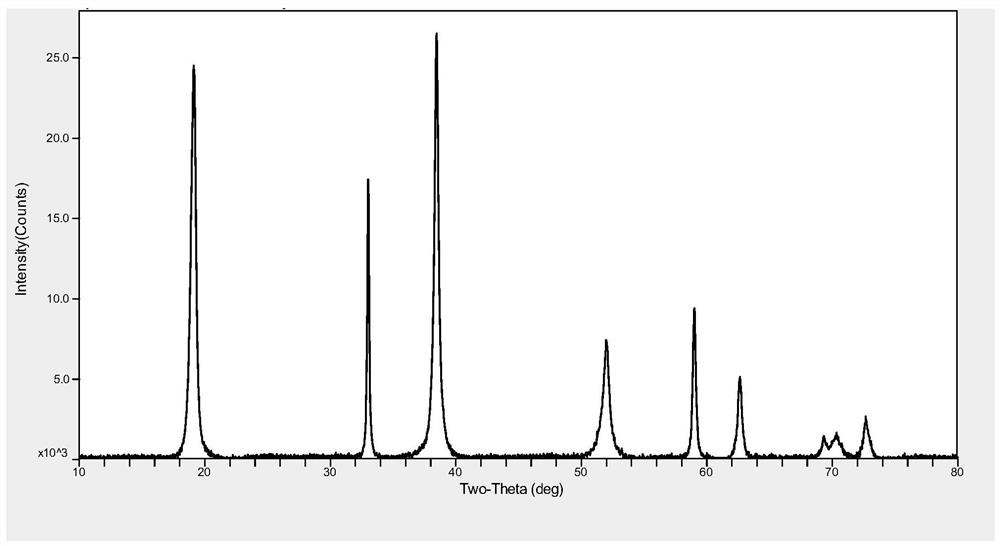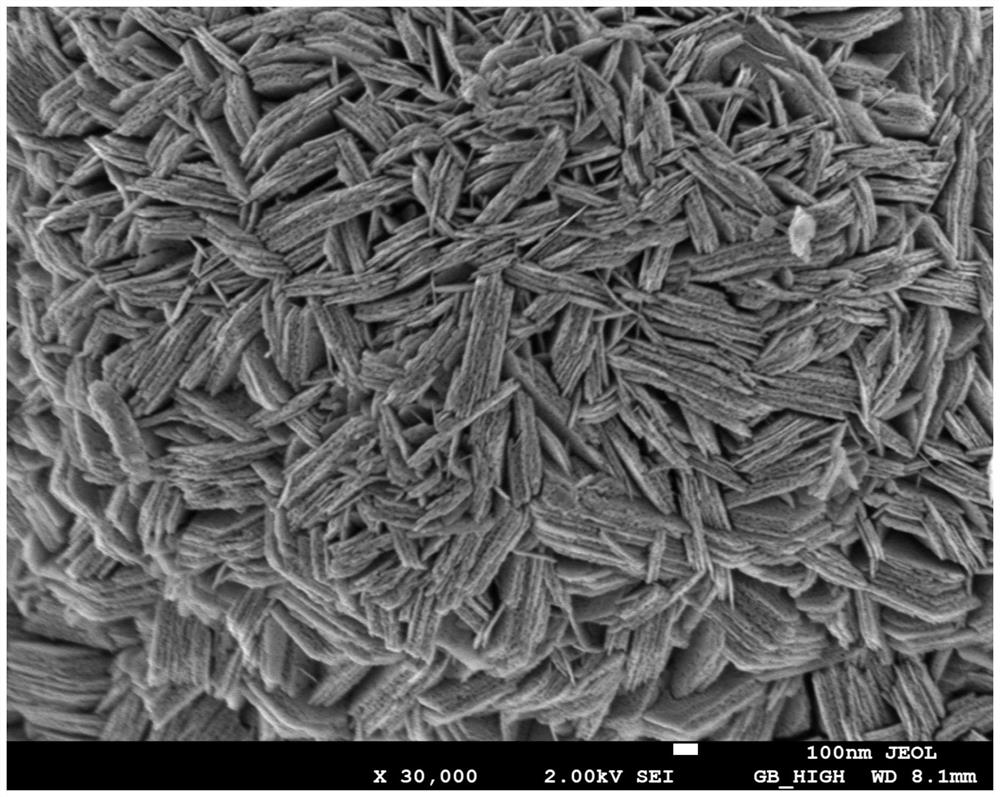Preparation method of ternary positive electrode material with low residual alkali content and high capacity retention ratio
A cathode material, high-capacity technology, applied in electrical components, battery electrodes, circuits, etc., can solve the problems of limited large-scale application, high nickel material rate and cycle performance decline, capacity attenuation, etc., to simplify the cathode calcination process, improve Circulation retention rate, the effect of reducing excess moisture
- Summary
- Abstract
- Description
- Claims
- Application Information
AI Technical Summary
Problems solved by technology
Method used
Image
Examples
Embodiment 1
[0047]Step 1. Dehydrate the nickel-cobalt-manganese hydroxide precursor with a metal element ratio of 85:05:10 after synthesis until the water content is 13%;
[0048] Step 2. Dry the nickel-cobalt-manganese hydroxide precursor with 13% moisture and metal element ratio of 85:05:10 at 180°C, measure the half-peak width, and obtain the process product;
[0049] Step 3. The process product obtained in step 2 is calcined at 300°C, 450°C, and 600°C for 30 minutes respectively, and washed and dried to obtain a ternary precursor;
[0050] Step 4. Mix the ternary precursor obtained in step 3 with lithium hydroxide according to the lithium ratio of 1.05, and sinter in the same process as in Comparative Example 1 to obtain a ternary positive electrode material.
Embodiment 2
[0052] Step 1. Dehydrate the nickel-cobalt-manganese hydroxide precursor with a metal element ratio of 85:05:10 after synthesis until the water content is 13%;
[0053] Step 2. Dry the nickel-cobalt-manganese hydroxide precursor with a water content of 13% and a metal element ratio of 85:05:10 at 180°C, measure the half-peak width, and soak in a mixed solution of ammonia water and ammonium nitrate for 1 hour , and then centrifugally washed and dried at 180°C to obtain the process product;
[0054] Step 3. Calcining the process product obtained in Step 2 at 300° C., 450° C., and 600° C. for 30 minutes respectively, washing and drying with water to obtain a ternary precursor.
[0055] Step 4. Mix the ternary precursor obtained in step 3 with lithium hydroxide according to the lithium ratio of 1.05, and sinter in the same process as in Comparative Example 1 to obtain a ternary positive electrode material.
Embodiment 3
[0057] Step 1. Dehydrate the nickel-cobalt-manganese hydroxide precursor with a metal element ratio of 96:02:02 after synthesis until the water content is 12%;
[0058] Step 2. Dry the nickel-cobalt-manganese hydroxide precursor with 12% moisture and metal element ratio of 96:02:02 at 180°C, and measure the half-peak width in a mixed solution of sodium carbonate and sodium hydroxide Soak for 2 hours, then perform centrifugal washing, and dry at 180°C to obtain the process product;
[0059] Step 3. Calcining the process product obtained in step 2 at 300°C, 450°C, and 600°C for 30 minutes respectively, washing and drying with water to obtain a ternary precursor;
[0060] Step 4. Mix the ternary precursor obtained in step 3 with lithium hydroxide according to the lithium ratio of 1.05, and sinter in the same process as in Comparative Example 1 to obtain a ternary positive electrode material.
PUM
 Login to View More
Login to View More Abstract
Description
Claims
Application Information
 Login to View More
Login to View More - R&D
- Intellectual Property
- Life Sciences
- Materials
- Tech Scout
- Unparalleled Data Quality
- Higher Quality Content
- 60% Fewer Hallucinations
Browse by: Latest US Patents, China's latest patents, Technical Efficacy Thesaurus, Application Domain, Technology Topic, Popular Technical Reports.
© 2025 PatSnap. All rights reserved.Legal|Privacy policy|Modern Slavery Act Transparency Statement|Sitemap|About US| Contact US: help@patsnap.com



